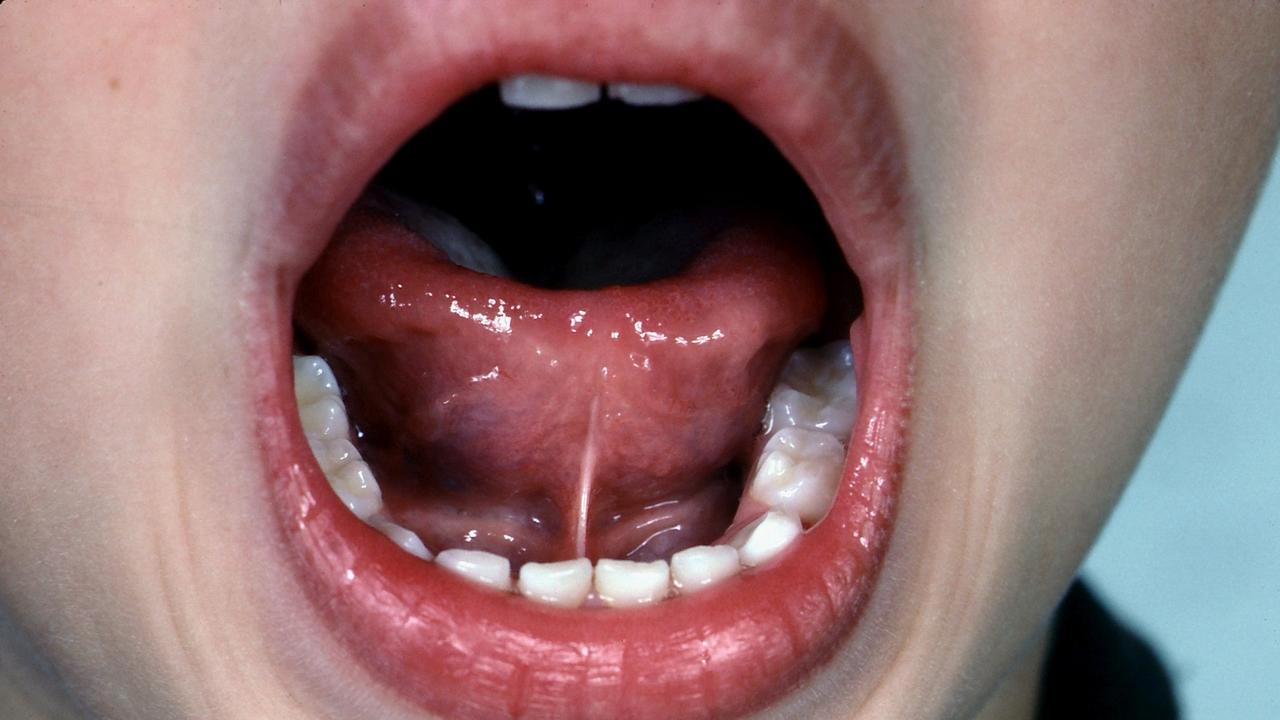Tongue and Lip Tie

A tongue-tie is also known as a restricted lingual frenum or a tethered oral tissue (TOT). The frenum is the line or band of tissue under the tongue. It connects the tongue to the floor of the mouth.

Some people have a frenum that is too tight or short and it can restrict the movement of the tongue and prevents it from resting in the correct position.
The correct resting position is when the tongue is filling up the roof of the mouth.
When the tongue stays in this ideal position, the teeth will grow in straighter and the face will develop properly. A tongue-tie keeps the tongue in the bottom of the mouth.
People who are tongue-tied often mouth breathe and commonly experience myofunctional problems such as chronic jaw pain, facial pain, headaches, teeth grinding and clenching, and dental and orthodontic issues.
According to studies, many children who are tongue-tied can experience airway issues and sleep apnea. If it is necessary to release (frenectomy) this restricted tongue, we recommend that pre AND post-surgical exercises are done so that the muscles of the tongue learn how to move the tongue in a new range of motions. The surgery itself is done by a dentist with either a scapel or laser and takes less than 20 minutes. We strongly recommend having stitches with either of these surgeries.
Before Tongue Tie Surgery After Tongue Tie Surgery
Tongue Thrust
Tongue thrust is normal in infants until approximately the age of six months. The loss of this normal infant behavior is one of the signs that the baby is ready to begin eating baby food.
Tongue thrusting can adversely affect the teeth and mouth. A person swallows from 1,200 to 2,000 times every 24 hours with about four pounds (1.8 kg) of pressure each time.
If a person suffers from tongue thrusting, this continuous pressure tends to force the teeth out of alignment. Many people who tongue thrust have open bites; the force of the tongue against the teeth is an important factor in contributing to bad bite (malocclusion).
Many orthodontists have completed dental treatment with what appeared to be good results, only to discover that the case relapsed because of the patient's tongue thrust. If the tongue is allowed to continue its pushing action against the teeth, it will continue to push the teeth forward and reverse the orthodontic work.


Speech is not frequently affected by the tongue thrust swallowing pattern. The sound (lisping) is the one most affected. The lateral lisp (air forced on the side of the tongue rather than forward) shows dramatic improvement when the tongue thrust is corrected. However, lisping and tongue thrust are not always associated.
Consequences of tongue thrust
1. Lisping (e.g., saying “thun” for sun).
2. Imprecise articulation of speech sounds.
3. Open-mouth posture.
4. Open bite.
5. Abnormal eruption of teeth and dental arch.
6. Abnormal tone of facial muscles.
7. Prolonged meal times due to ineffective chewing and swallowing.
8. Spillage of food/fluid from the anterior mouth.
9. Negative cosmetic effects.
10. Lower self-esteem.
11. Problems with fitting of denture in future.
Emotional Factors
The cumulative effect of these barriers in the way of normal development all too often has negative repercussions on self esteem and confidence and emotional or behavioral problems soon follow, complicating diagnosis especially in children. Mukai, Mukai & Asaoka (1993) have summed it up thus: “Tongue tie patients live in a state of stress”.
Once past infancy, our interactions with people are increasingly verbal; indeed, some people once out of school hardly read or write at any length. They interact through speech and body language. It hardly needs to be stressed that if our verbal messages are not received and understood, we can become isolated from our fellows or overly dependent on interpreters.
Both children and adults can then lack self confidence, and sometimes, fail to achieve the success that brings financial and social comfort.
For these reasons, I include emotional balancing in every myofunctional program. Releasing trapped emotions is a unique new approach to healing emotional pain and achieving successful myofunctional results.
Tongue Coating
In Myofunctional Therapy we are focused on the movement and function of the tongue however, due to my extensive training in Tongue Analysis, I also evaluate the surface of the tongue. The color, coating, size and shape all give me clues about what is happening within the body.
Since I am dedicated to getting at the ROOT cause, the tongue can provide additional information to help you or your child flourish systemically.
Our Root Camp programs are designed to guide our clients towards optimal health which includes tongue and fingernail analysis, emotional imbalances, scar therapy, nutritional consulting and more.

Click here to take a FREE comprehensive screening for your child or for an adult screening
My Myofunctional Therapy programs include:
1. Habit elimination therapy.
2. Exercises to improve nasal breathing and oral facial functions.
3. Teaching and promoting proper chewing, breathing, and swallowing.
4. Re-patterning head and neck posture problems.
5. Generalization and habituation of the new muscle patterns.
6. Emotional balancing
Parental involvement is very important to a child's success, and key to that success is a supportive environment that provides consistent encouragement and motivation necessary for positive and permanent change.

50% Complete
Two Step
Lorem ipsum dolor sit amet, consectetur adipiscing elit, sed do eiusmod tempor incididunt ut labore et dolore magna aliqua.
